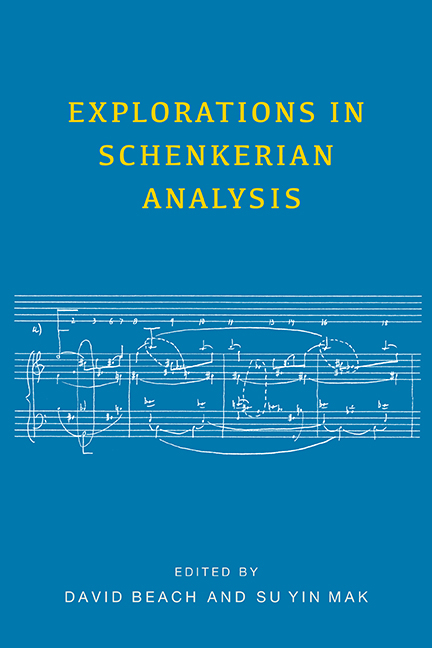Book contents
- Frontmatter
- Contents
- Preface
- Part One Eighteenth Century
- Part Two Early Nineteenth Century
- 6 Schubert's “Unfinished” Symphony: Analytical Observations
- 7 Structural and Form-Functional Ambiguities in the First Movement of Schubert's Octet in F Major, D. 803
- 8 The Form of Chopin's Prelude in B-flat Major, Op. 28, No. 21
- 9 “All That Is Solid Melts into Air”: Schumann's Overture to Manfred
- 10 Endings without Resolution: The Slow Movement and Finale of Schumann's Second Symphony
- Part Three Late Nineteenth Century
- Appendix: An Interview with Edward Laufer
- List of Contributors
- Index
8 - The Form of Chopin's Prelude in B-flat Major, Op. 28, No. 21
from Part Two - Early Nineteenth Century
Published online by Cambridge University Press: 28 June 2018
- Frontmatter
- Contents
- Preface
- Part One Eighteenth Century
- Part Two Early Nineteenth Century
- 6 Schubert's “Unfinished” Symphony: Analytical Observations
- 7 Structural and Form-Functional Ambiguities in the First Movement of Schubert's Octet in F Major, D. 803
- 8 The Form of Chopin's Prelude in B-flat Major, Op. 28, No. 21
- 9 “All That Is Solid Melts into Air”: Schumann's Overture to Manfred
- 10 Endings without Resolution: The Slow Movement and Finale of Schumann's Second Symphony
- Part Three Late Nineteenth Century
- Appendix: An Interview with Edward Laufer
- List of Contributors
- Index
Summary
The unusual form of Chopin's Prelude in B-flat major, op. 28, no. 21 has attracted the attention of scholars. Gerald Abraham observes that “the piece is one of the finest examples of Chopin's art on the tiny scale, for the rudimentary ternary form is completely transfigured.” Charles Rosen notes in his brief discussion of our prelude that highly varied “final returns … often make it impossible to call Chopin's forms either ternary or binary. The Prelude in B-flat Major seems at first to be a ternary form…. Nevertheless the return to the opening material … is so dramatically recomposed to appear as the continuation and the climax to the central material that it is less a return than a final stretto that leads to the coda.” I claim that the B-flat-major prelude is best understood as a throughcomposed form, and my comments will focus on musical procedures that integrate sections across formal boundaries. This study concludes by considering the links between the end of this prelude and the beginning of the following Prelude in G Minor.
In the autograph of the twenty-four preludes at the National Library in Warsaw, our prelude originally had the tempo indication Andante, but Chopin crossed it out and substituted the word Cantabile, the only such indication in opus 28. Perhaps Chopin preferred Cantabile because it contrasts with the Molto agitato indication of the following Prelude in G Minor.
Design and Tonal Structure
As shown in example 8.1, the prelude can be divided into four thematically differentiated sections: A (mm. 1–16), B (mm. 17–32), A’ (mm. 33–45) and coda (mm. 45–59). Sections B and A’ together constitute a single large phrase, so the piece might be outlined A, B–A’, coda. The tonic (B-flat major) of section A is followed by a section B built entirely on the pedal point G?. The initial? VI (G-flat major, mm. 17–24) is untonicized, reinforcing the connection between section B and the following A’.
- Type
- Chapter
- Information
- Explorations in Schenkerian Analysis , pp. 142 - 154Publisher: Boydell & BrewerPrint publication year: 2016
- 1
- Cited by



